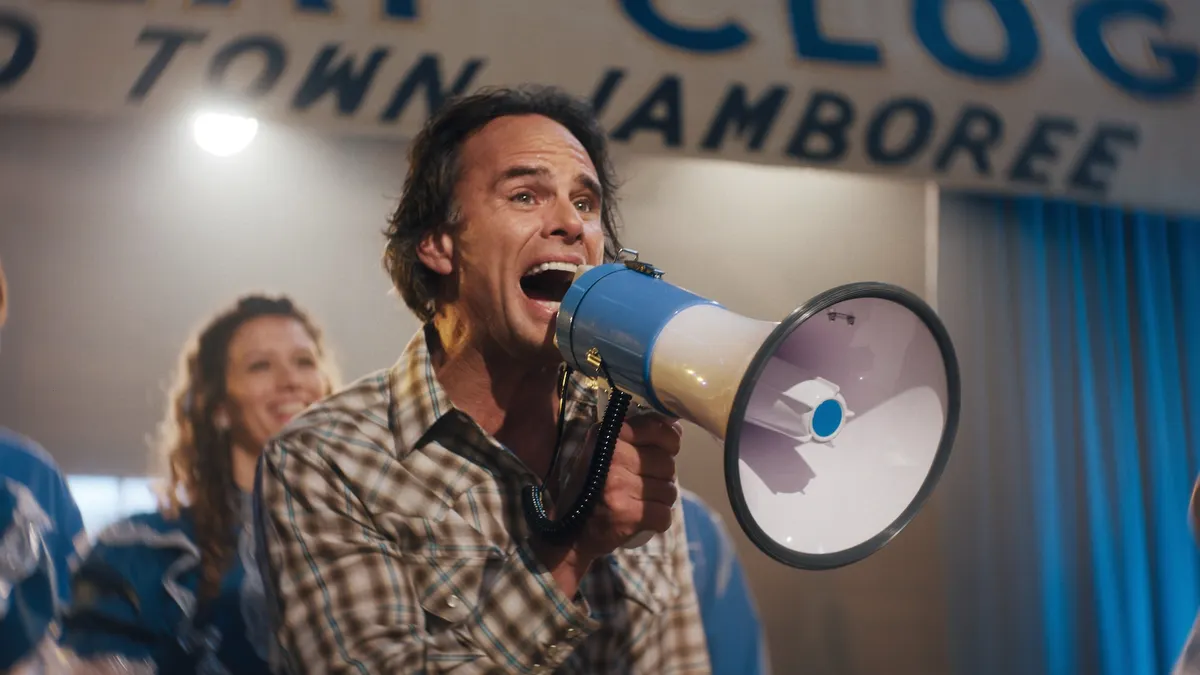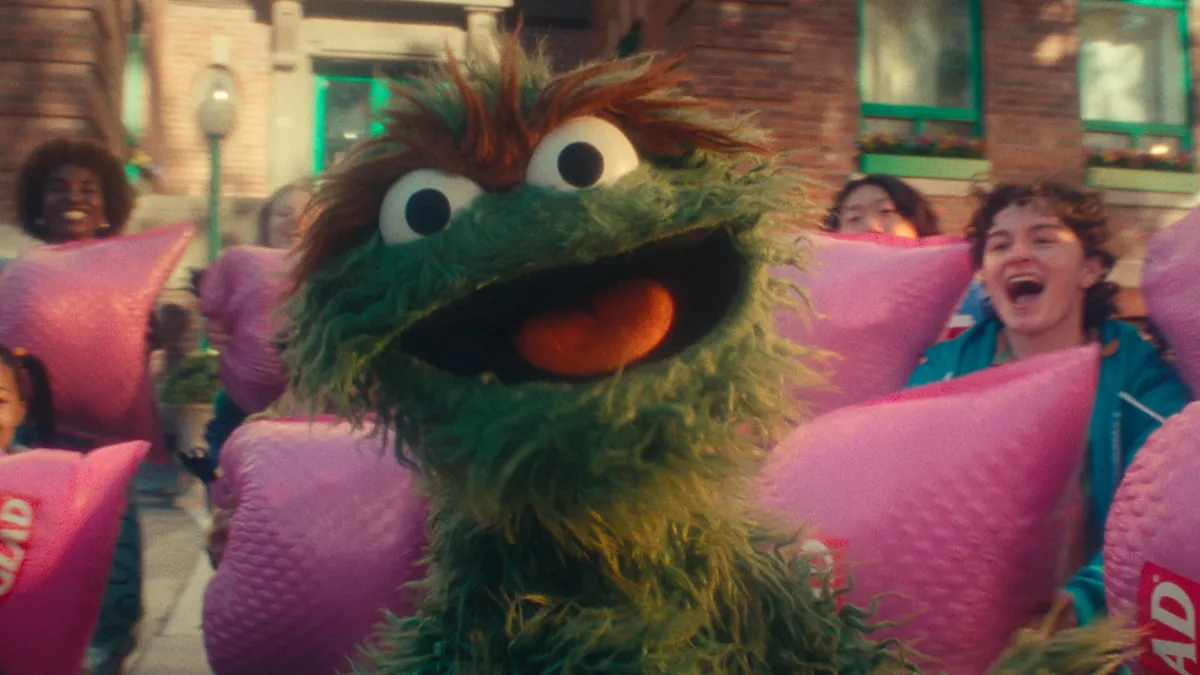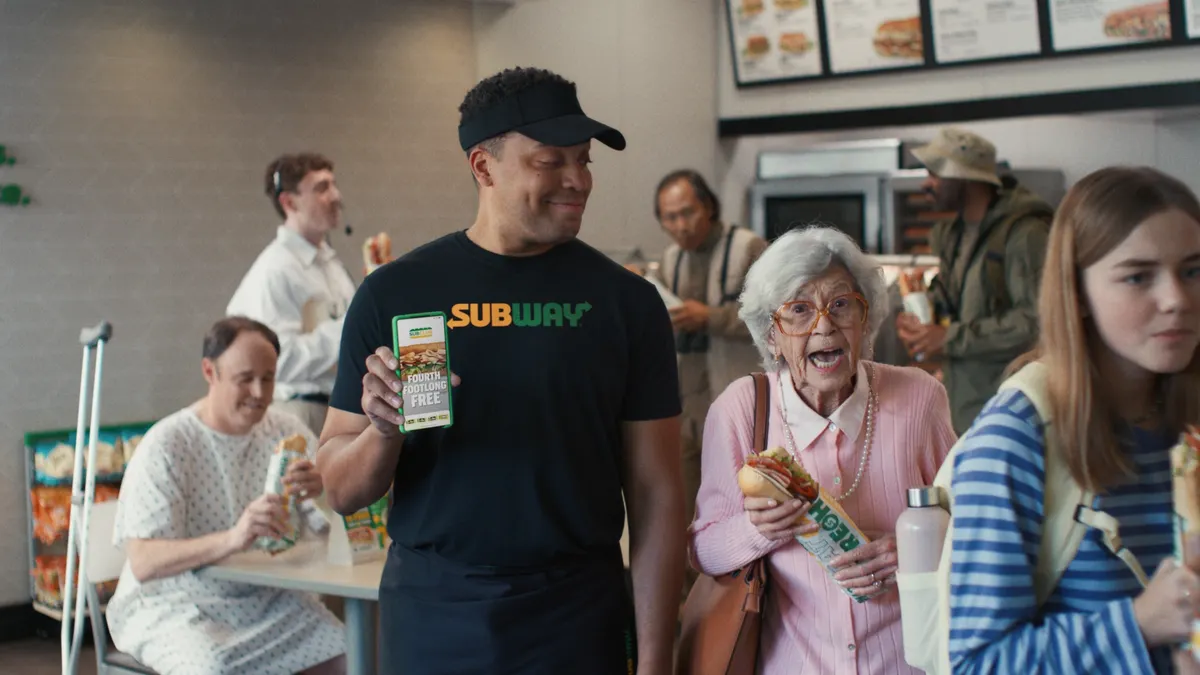NEW YORK — Studio 71 might not have the name recognition of some of its peers at the IAB's Digital Content NewFronts, but the global media company and creator network doesn't seem to mind. In fact, a differentiating factor for the firm compared to heavier hitters is keeping its approach to influencers and their work with brands tailored and tightly controlled, resulting in an environment co-founder and CEO Reza Izad compared to a "clean, well-lit" space.
At its NewFronts presentation on Tuesday, Studio 71 also showed its talent pool continues to grow. The company, a frequent presenter at the annual slate of glitzy pitches by platforms and publishers to advertisers, announced long-running YouTube brand Smosh as an official partner, adding to a roster that includes Rhett & Link's Good Mythical Morning and Lilly Singh. And while Studio 71 has deep YouTube roots, the company is also diversifying quickly into areas like over-the-top (OTT) TV and podcasts, where it has tripled its number of shows over the past six months.
Underpinning the cross-media expansion was a focus on technology solutions that Studio 71 hopes will help brands scale their influencer efforts and drive value. On that front, the company dished on three ad product developments: the expansion of a brand safety tool called Context that launched last year and will now include the ability to monitor for inappropriate comments and links in videos; a deeper integration of Amazon Web Services (AWS) into its Arrow Intelligence Platform, which will assist marketers in predicting and tracking how influencer content drives transactions; and the adoption of a new ad format called Xpand, which was created by Spaceback and converts existing social content into display units that can be served programmatically.
After the general presentation — which wrapped with an appearance by wildlife-focused creator The Real Tarzann, who ran into some technical hiccups thanks to a live python — Marketing Dive sat down with chief executive Izad to take a deeper look at Studio 71's new offerings and what they say about the direction influencer marketing is taking.
The following interview has been edited for clarity and brevity.
MARKETING DIVE: Is the Arrow Intelligence Platform news revealed today the first time you have worked with AWS on an ad product?
REZA IZAD: We've always been a part of the AWS system. What we're leveraging that we didn't leverage as much before are the machine learning aspects of AWS. SageMaker is Amazon's machine learning platform and we've been training it to do more predictive things around our branded content offerings. We've been testing it for months because efficacy is a key thing. We've been using the predicative piece for the last four to six weeks, where we're confident in the numbers and the results.
AWS is a big enterprise solutions provider. What does doing more predicative and machine learning stuff with it now say about the maturation of influencer marketing, especially because the announcement is so centered around driving transactions?
IZAD: There are two types of marketers who do branded content. There are the marketers who are coming in that are looking to reach audiences that they've been struggling to reach through traditional media and to tell stories that align with those audiences' values. They're looking for brand lift and they're selling, for example, a car, and the sales funnel is a little more extended.
Then there's a whole other set of advertisers — the DTC brands, the app makers — that are running much more performance-driven campaigns. We've done a ton of those campaigns — it's what we probably do more of than the brand stuff — so we've aggregated all of our first-party data, plus a whole host of other data around what's being clicked on in the YouTube and Instagram ecosystems and we're leveraging that data more predicatively than we were before.
Is Arrow Intelligence your biggest ad product offering at this point?
IZAD: On the media side, Context has been our biggest ad product. That's been a real success story. Branded content is a big part of our business, so we believe [Arrow] is going to power a pretty substantial part of that.
A lot of the platforms are trying to accommodate the transactional side of things. Did that play into the decision to build out Arrow Intelligence now?
IZAD: No. What played into it was our partners requiring us to be smarter. Performance marketers are like people on dating apps: it's quick, it's very transactional. We want to provide real results in terms of what they're looking for, so that they're re-upping with us on a continuous, consistent basis.
Could you talk about Xpand and how that fits into what we've been talking about?
IZAD: It's tied to a similar thought. I don't think anyone likes banner display units; it's not the world's greatest experience. The question another company, Spaceback, solved was leveraging all this [social] content that people like, click on and share into an ad product. We thought this was interesting, because a lot of our performance campaigns and a lot of our brand campaign partners are like, "we love this, how do we get more reach with this."
We do [YouTube] TrueView, we do social boosting, but you're still stuck with one data set — you're stuck in Facebook's data set or Google's data set. You can't layer in your own as effectively and there's a lot of things you can't do that you can do in programmatic from a data extraction and a data overlay that [Xpand] allows brands to do. The idea is that an ad's going to look very familiar, particularly when people in this age are consuming stuff on a phone. You scroll through your phone and, boom, there's a picture of maybe a talent you recognize with a little buy button.
How would those transactions actually work?
IZAD: Spaceback's technology takes the social asset and turns it into an ad unit that's constantly refreshed and updated. We create the asset, they turn it into an ad unit and then we traffic it.
You mentioned the dominance of mobile consumption, but your presentation also touched a lot on OTT and podcasts. How do you think about those channels differently than digital video in terms of something like audience, or is it not that different?
IZAD: Here's our thesis: We partner with or we produce for tons of really creative people, who build typically large audiences. Where those audiences historically live for us from a media point of view is on YouTube. But in the last few years, platforms like Roku or Amazon Fire have developed large audiences.
We know we're not Netflix in terms of total consumption, but we have a lot of volume and we publish on a lot of apps, which means we can generate a fair amount of viewership that can translate to ads on Snap, on Facebook and in mediums like podcasting, where a format idea can move quickly. I'll give you an example: "Worst Firsts" by Brittany Furlan started on YouTube and was successful, so we translated it into a podcast and we're doing a version for Snap, and so on.
We're not there yet today, but we expect that, over time, our ad server or some form of ad technology stack that we're operating will be able to sell the brand-safe version on YouTube, the brand-safe version on OTT and the brand-safe version in other places to deliver a more holistic view.
In terms of podcasts, Studio 71's experienced a 400% growth in streaming over the past sixth months, according to some data the company shared. But it sounds like you're letting the creators guide where you decide to invest there?
IZAD: It's really hard to get people's attention. People who have people's attention usually can find audiences and move those audiences. We also believe that [podcast] segments aren't super well served.
[The New York Times'] "The Daily" is for for 30 or 40-plus listeners. "Dirty John" is the same thing. They're all great podcasts, but there are not that many focused on the Gen Z and younger millennial audience, which we own. We think that we're going to deliver the first podcast experience to many of them. We're not going to come out with our version of "Dirty John," as much as we love to consume it.
It's interesting to see, because podcasts have been around for so long, but in the past year or so and with all the acquisitions, they've blown up.
IZAD: Money usually gets everyone excited.
Tying some of this together is Context and brand safety. Studio 71 is building out its own brand safety product as a bigger value proposition. As the presentation brought up, platforms like YouTube continue to emphasize brand safety, but it seems like a systemic problem that's hard for them to solve in the broad sense.
IZAD: In the broad sense, that is correct. We don't have the same challenges these platforms have, since they're self-serve, so there are literally billions of people who can upload what they want. When you get to the scale they're operating at, there's going to be bad people. They're getting really good at policing it but maybe not to everyone's standards.
We fundamentally are starting in a different neighborhood than [these platforms are]. They are "everything," and in everything there are a lot of scary places. We're a much cleaner, well-lit, manageable and controlled space. The Context product assures that.
Not every video we publish is brand-safe, but every video we traffic an ad on will be, and that's the big difference. We have the resources to make these investments and that's kind of table stakes if you're going to compete in this space.




















